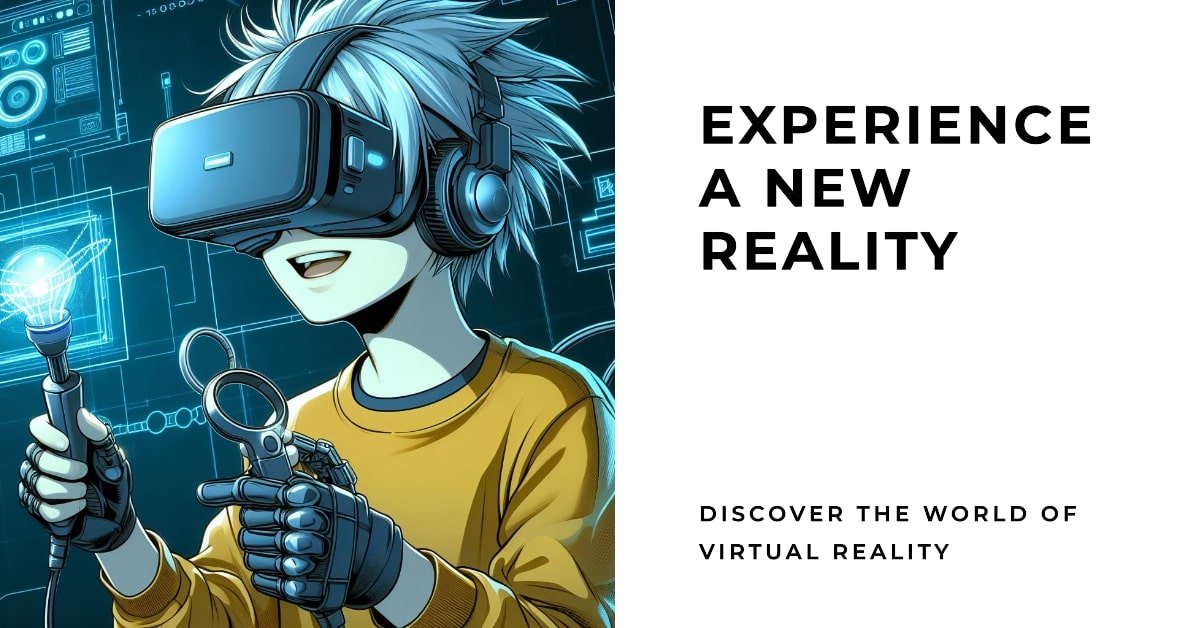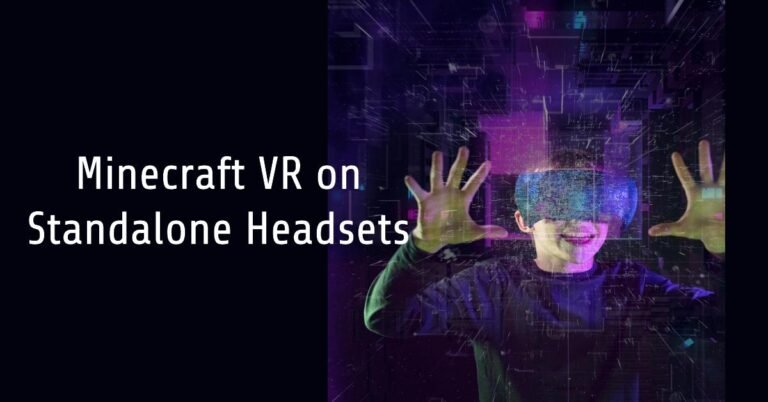What is Virtual Reality? Dive into Simulated Worlds
Remember that time you were so engrossed in a book, that you felt like you were transported to another world? Imagine experiencing that feeling not just through words, but through sight, sound, and even touch. That’s the magic of virtual reality (VR).
What is virtual reality?
In simpler terms, VR is a computer-generated simulation that creates an artificial three-dimensional (3D) environment. Imagine yourself wearing a headset that projects a completely immersive world around you. You can turn your head, move your hands, and even walk around, all within this virtual space. It’s like stepping into a movie or video game, but you’re not just a spectator – you’re a participant.
This technology has been around for decades, but recent advancements have made VR headsets lighter, more affordable, and far more powerful. Now, VR is on the cusp of revolutionizing a whole range of industries, from entertainment to education and even healthcare.
Intrigued? Buckle up, because we’re about to take a deep dive into the world of VR. On ARVRRealm, we’ll explore the nitty-gritty of VR technology, its various applications, and the exciting possibilities it holds for the future.
How Exactly Does VR Work – Demystifying VR Technology
So, how exactly does VR work? The core components of a VR system include:
- VR Headset: This is the key piece of equipment. It looks like a pair of goggles with built-in screens, one for each eye. The headset displays high-resolution images tailored to each eye, creating a sense of depth and realism. Some high-end headsets also incorporate motion tracking sensors that detect your head movements, allowing you to explore the virtual world naturally.
- Controllers: These handheld devices allow you to interact with virtual objects. They can be shaped like traditional game controllers or even gloves that track your hand movements with incredible precision. Imagine picking up a virtual paintbrush or wielding a virtual sword – the possibilities are endless!
- Software: The software is the heart and soul of the VR experience. It creates the 3D environment, tracks your movements, and responds to your interactions. VR games, simulations, and experiences are all powered by sophisticated software programs.
Exploring the Realms of VR Applications
While VR started in the realm of science fiction, it’s quickly becoming a reality with a wide range of applications. Here are some of the most exciting ways VR is being used today:
- Entertainment: VR gaming is a game-changer (pun intended!). Imagine yourself battling aliens on a distant planet, exploring the depths of the ocean, or even scaling Mount Everest – all from the comfort of your living room. VR is also making its way into movie experiences, allowing you to feel like you’re truly part of the action.
- Education and Training: VR can transform education by creating immersive learning experiences. Imagine students exploring the pyramids of Egypt or dissecting a frog in a virtual lab. VR is also being used for job training, allowing pilots to practice flying simulations or surgeons to rehearse complex procedures.
- Design and Architecture: VR allows architects and designers to walk through 3D models of buildings before they’re even built. This can help identify potential problems and make design changes early on in the process.
- Healthcare: VR is being used for pain management, phobia treatment, and even physical therapy. Imagine a burn patient finding solace in a virtual beach experience or someone with arachnophobia confronting their fears in a safe, controlled VR environment. The potential for VR in healthcare is vast and continues to be explored.
The Future of VR
VR technology is still in its early stages, but the potential is truly mind-boggling. Here’s a glimpse into what the future might hold:
- Hyper-realistic VR experiences: Imagine VR so realistic that it’s indistinguishable from the real world. This could have profound implications for everything from social interaction to remote work.
- VR for the masses: As VR technology becomes more affordable and accessible, we can expect it to become a mainstream technology, integrated into our everyday lives.
- The rise of the Metaverse: The Metaverse is a hypothetical future iteration of the internet, where users can interact with each other and digital objects in a shared virtual space. VR is seen as a key technology that will enable the Metaverse to come to life.
Overcoming Challenges and Addressing Concerns
Of course, VR technology isn’t without its challenges. Here are some of the hurdles that need to be addressed:
- Motion sickness: Some people experience nausea or dizziness when using VR, especially during fast movements or when there’s a disconnect between what your eyes see and what your inner ear feels. This is a known issue that developers are working to address through improved software design and hardware advancements.
- Cost: High-end VR headsets can be expensive, putting the technology out of reach for some people. However, the cost of VR technology is steadily decreasing, and more affordable options are emerging.
- Privacy concerns: VR experiences can collect a lot of data about users, including their movements, preferences, and even emotional responses. It’s important to ensure that this data is collected ethically and used responsibly.
How to Get Started with VR
So, you’re curious about VR and want to experience it for yourself? Here are a few steps to get you started:
- Do your research: There are a variety of VR headsets available on the market, each with its strengths and weaknesses. Consider your budget, the types of VR experiences you’re interested in, and your technical expertise before making a purchase.
- Start simple: You don’t need the most expensive headset to have a great VR experience. There are plenty of affordable mobile VR options that use your smartphone as a display.
- Explore VR content: Once you have your headset, there’s a whole world of VR content waiting for you. There are VR games, educational experiences, simulations, and even virtual tours of real-world locations.
FAQs about Virtual Reality
Is VR safe?
VR is generally safe for most people, but there are a few things to keep in mind. It’s important to take breaks every 20-30 minutes to avoid eye strain and motion sickness. People with certain medical conditions, such as epilepsy, should consult with a doctor before using VR.
Can VR be addictive?
Like any technology, VR has the potential to be addictive. It’s important to practice moderation and maintain a healthy balance between virtual and real-world activities.
What are the future applications of VR?
The possibilities are endless! VR could be used for virtual travel, shopping, social interaction, and even remote surgery. We’re only just beginning to scratch the surface of what VR can do.
Conclusion
Virtual reality is a powerful technology that has the potential to transform the way we live, work, and learn. As VR continues to evolve, we can expect to see even more innovative and exciting applications emerge. So, the next time you wonder what is virtual reality, remember that it’s not just about fancy gadgets and video games. It’s about opening doors to new worlds of possibility.
Ready to take the plunge into VR? There are several VR headsets available on the market, each with its strengths and weaknesses. Do some research to find the one that’s right for you. And who knows, maybe you’ll be the next pioneer exploring the uncharted territories of virtual reality!
Have you tried VR? What are your thoughts on this technology? Share your experiences and questions in the comments below! Let’s discuss the exciting future of VR together on ARVRRealm!







4 Comments